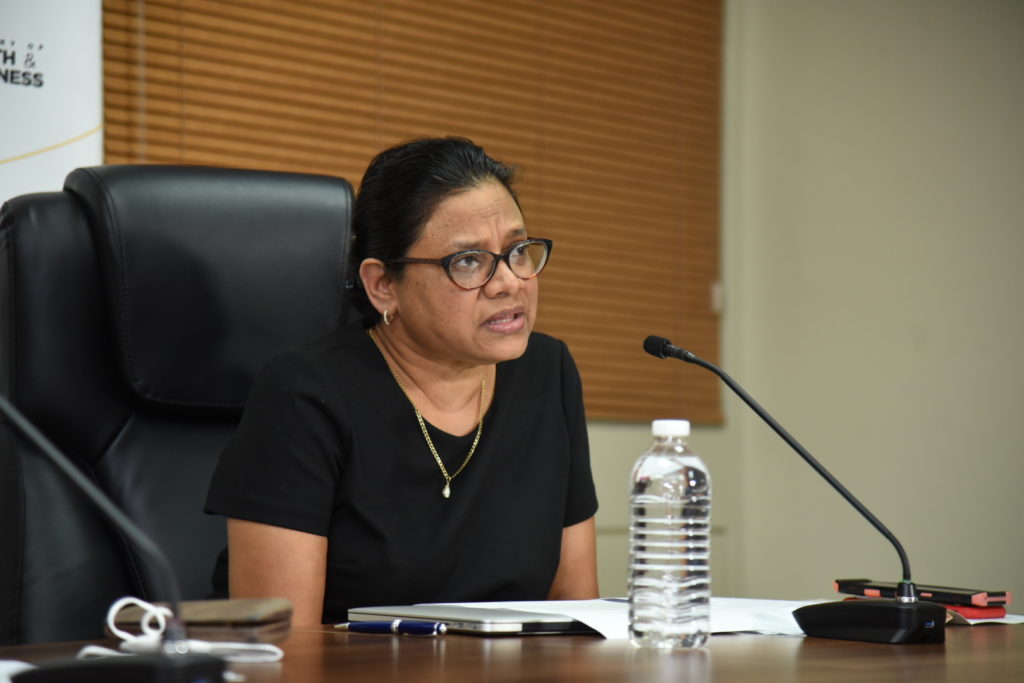

Jamaica has made significant strides towards meeting the targets in the Pan American Health Organization (PAHO) Plan of Action for Cervical Cancer Prevention and Control 2018-2030.
Addressing the 170th Session of the PAHO Executive Committee Meeting, which was held in a hybrid format from June 20-24, Chief Medical Officer in the Ministry of Health and Wellness, Dr Jacquiline Bisasor-McKenzie, noted the progress made in numerous areas.
These include the development of a National Plan for Cervical Cancer Elimination, with support from PAHO and establishing screening guidelines for cervical cancer.
“The National Screening Guidelines for Priority Non-communicable Diseases in Primary Care in Jamaica was published in 2020. It includes guidelines for cervical cancer screening in the 21 to 64 years target group and recommendations for screening via pap smears or human papillomavirus (HPV) testing for women 30 to 64 years of age,” Bisasor-McKenzie said.
She noted that implementation of the guidelines has already commenced in one parish through the Health System Strengthening Project for the Prevention and Control of Non-Communicable Diseases (NCDs).

In addition, the CMO said that Jamaica has ramped up and will continue to increase public awareness and education on cervical cancer prevention and control.
She noted that increased awareness and screening will be promoted as part of the Life Stage and Integrated Approach in primary-care centres, even as the country undertakes a comprehensive Primary Healthcare Reform Programme.
The CMO noted, as well, that palliative care, which is care for the terminally ill and their families, will be added to the list of services within health centres.
On the matter of treatment, two radiotherapy treatment centres have been established and access to essential medications that are provided free of cost to public-sector clients through the National Health Fund has increased.
“Treatment services will be provided in more hospitals; promoting early treatment and laboratory capacity for processing samples will be increased,” she added.
She told the meeting that cancer data collection is ongoing, through the National Cancer Registry, which was launched in 2018, to gather data on the incidence of cancer islandwide. The CMO said that work is being done to progressively optimise the registry.

She acknowledged that the COVID-19 pandemic has posed some challenges over the past two years with respect to country-level implementation of the Action Plan.
She pointed out that the country supports the recommended actions for post-COVID-19, and in particular, health system strengthening, utilisation of the Revolving Fund for Access to Vaccines and Strategic Funds for essential medicines and continued support for training and education.
The CMO gave the country’s commitment to “reorient, re-strategise, prioritise and implement impactful evidence-based interventions tailored to the local context, toward the achievement of cervical cancer elimination”.
The goal of the PAHO Plan of Action for Cervical Cancer Prevention and Control 2018-2030, is to accelerate progress towards the elimination of cervical cancer as a public health problem in the Americas, by reducing the incidence and mortality rates by one-third, over the next eight years.
This goal is aligned with Target 3.4 of the Sustainable Development Goals (SDG). The PAHO Executive Committee is composed of nine member states of the 51-member organisation, elected by the Conference or the Council for overlapping periods of three years. The Committee, which meets twice a year, acts as a working party of the Conference or Council.







Comments